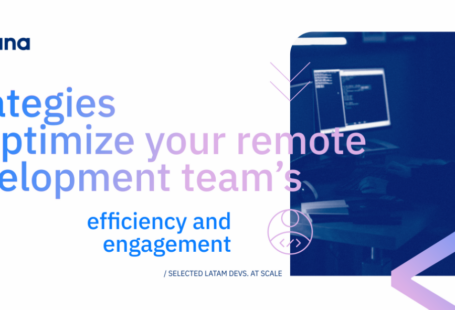Imagine this. You have decided to hire a Sales Manager. It’s exciting to bring in an expert for this project and you’re relieved. However, after six or twelve months, for some reason, the project is still not garnering any significant outcomes. The new person is nice and hardworking. But somehow, something is just not right and you’re frustrated. Everybody is.
As a company, this has happened to us many times with new hires. A handful of times, after serious discussions and close monitoring, the new hire managed to improve and a project was taken to a next level. In a few other cases, a new recruit was found instead and it ended well. But in many cases, we end up parting ways, which is a sad outcome. That’s why I created this video to help you set early expectations with new hires.
It is essential for both parties, the hiring and the hired, to know what is expected of them early on to ensure an optimum working environment.
Did you know that one of the top reasons for unhappiness in the workplace is communication issues with one’s manager/supervisor?
Quite often, managers make inaccurate assumptions that employees already have all the information they need and how things work within the company. It’s worse when managers don’t even set clear goals or KPIs. Meanwhile, the employees have a completely different view of what is expected of them. Due to this evident disconnect, the employee fails to deliver the expected results, and the manager ends up blaming the employee. Resentment follows thereafter, leading to poor performance.
This is why it’s critical for you as a manager to get everyone on the same page and to set clear expectations at the beginning of your professional journey together.
To manage this, Workana implemented a tool to manage expectations called the Managing Expectations Sheet this past year.
This sheet highlights 3 different working fields or scenarios:
- An ideal situation
- A less ideal situation but acceptable
- Scenarios that should be avoided.
Each field will highlight 5-10 specific aspects of work that describes the actual skill involved.
For example, let’s see how this applies to a Sales Manager.
Ideal Situation:
- Developing and executing sales strategies from scratch
- Keeping track of sales, leads with clear plan to close new seals
- Consistently hit sales goals
Less than Ideal Situation but Acceptable:
- Motivated to find new clients, customers
- Hits sales goals
Scenarios that should be avoided:
- Regularly gets sidetracked and needs to be micromanaged
- Focuses on low-outcome work and regularly needs to be told to stay focused
- Does not hit sales goals
This tool allows hiring managers to track the performance of members while new members are able to have a clear view of their work operations. The idea of this document is for the manager to inform the newly hired early on of what is expected of him or her. It can even be presented during the interview process. By making the respective person involved in this process early allows expectations of both parties to be discussed. Both parties should then come to an agreement of the specific aspects of work. Following that, set reminders to check on his/her work with regards to this document.
We found that it’s best to review this 3 months in, six months in and a year in. After a year, you can rely on OKRs or any goal system you have in place.
At Workana, this tool also helped us as managers to visualize what is expected of this new hire. In addition to that, it’s useful in working with the cultural aspects of new hires.
Give this a try and let us know!





